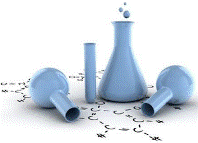Chemical and Biomolecular Engineering, Department of
Date of this Version
4-16-2019
Document Type
Article
Citation
2019 Published by Elsevier Ltd.
Abstract
The present study aims at developing a new, ultrafine particle-based efficient antibiotic delivery system for the treatment of tuberculosis. The carrier material to make the rifampicin (RIF)-loaded particles is a low molecular weight starshaped polymer produced from glucosamine (core building unit) and L-lactide (GluN-LLA). Particles were made via electrohydrodynamic atomization. Prolonged release (for up to 14 days) of RIF from these particles is reported. Drug release data fits the Korsmeyer-Peppas equation, which suggests the occurrence of a modified diffusion-controlled RIF release mechanism in vitro and is also supported by differential scanning calorimetry and drug leaching tests. Cytotoxicity tests on Mycobacterium smegmatis showed that antibiotic-free GluN-LLA and polylactides (PLA) particles (reference materials) did not show any significant anti-bacterial activity. The minimum inhibitory concentration and minimum bactericidal concentration values obtained for RIF-loaded particles showed 2- to 4-fold improvements in the anti-bacterial activity relative to the free drug. Cytotoxicity tests on macrophages indicated that cell death correlates with an increase of particle concentration but is not significantly affected by material type or particle size. Confocal microscopy was used to track internalization and localization of particles in the macrophages. The uptake of GluN-LLA particles is higher than those of their PLA counterparts. In addition, after phagocytosis, the GluN-LLA particles stayed in the cytoplasm and showed favorable long-term drug release behavior, which facilitated the killing of intracellular bacteria when compared to free RIF. The present studies suggest that these drug carrier materials are potentially very attractive candidates for the development of high-payload, sustained-release antibiotic/resorbable polymer particle systems for treating bacterial lung infections.



Comments
https://doi.org/10.1016/j.heliyon.2019.e01539 Article Nowe01539